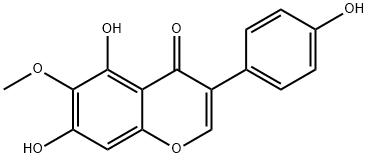A4624612
Guaiacol , 98% , 90-05-1
Synonym(s):
2-Methoxyphenol;Catechol monomethyl ether;Pyrocatechol monomethyl ether
CAS NO.:90-05-1
Empirical Formula: C7H8O2
Molecular Weight: 124.14
MDL number: MFCD00002185
EINECS: 201-964-7
| Pack Size | Price | Stock | Quantity |
| 100G | RMB39.20 | In Stock |
|
| 500G | RMB93.60 | In Stock |
|
| 2.5kg | RMB388.80 | In Stock |
|
| others | Enquire |
Update time: 2022-07-08
PRODUCT Properties
| Melting point: | 26-29 °C (lit.) |
| Boiling point: | 205 °C (lit.) |
| Density | 1.129 g/mL at 25 °C (lit.) |
| vapor density | 4.27 (vs air) |
| vapor pressure | 0.11 mm Hg ( 25 °C) |
| refractive index | n |
| FEMA | 2532 | GUAIACOL |
| Flash point: | 180 °F |
| storage temp. | 2-8°C |
| solubility | H2O: insoluble |
| form | Liquid After Melting |
| pka | 9.98(at 25℃) |
| color | Clear colorless to light yellow |
| PH | 5.4 (10g/l, H2O, 20℃) |
| Odor | at 1.00 % in dipropylene glycol. phenolic smoke spice vanilla woody |
| Odor Type | phenolic |
| Odor Threshold | 0.0074ppm |
| Water Solubility | 17 g/L (15 ºC) |
| FreezingPoint | 28℃ |
| Sensitive | Air Sensitive |
| Merck | 14,4553 |
| JECFA Number | 713 |
| BRN | 508112 |
| Dielectric constant | 11.0(-18℃) |
| Stability: | Stable, but air and light sensitive. Combustible. Incompatible with strong oxidizing agents. |
| InChIKey | LHGVFZTZFXWLCP-UHFFFAOYSA-N |
| LogP | 1.34 |
| CAS DataBase Reference | 90-05-1(CAS DataBase Reference) |
| NIST Chemistry Reference | Phenol, 2-methoxy-(90-05-1) |
| EPA Substance Registry System | Guaiacol (90-05-1) |
Description and Uses
Guaiacol is a precursor of vanillin and santalidol (a synthetic sandal- wood fragrance). it is obtained from wood tar by the destructive distillation of hardwood, by the distillation of the phenol fraction of coal tar, or through the use of o-dichlorobenzene. it is processed to yield vanillin.
Safety
| Symbol(GHS) |  GHS07 |
| Signal word | Warning |
| Hazard statements | H302-H315-H319 |
| Precautionary statements | P264-P270-P280-P301+P312-P302+P352-P305+P351+P338 |
| Hazard Codes | Xn,T,Xi |
| Risk Statements | 22-36/38 |
| Safety Statements | 26 |
| RIDADR | 2810 |
| WGK Germany | 1 |
| RTECS | SL7525000 |
| Autoignition Temperature | 750 °C |
| Hazard Note | Toxic/Irritant |
| TSCA | Yes |
| HazardClass | 6.1(b) |
| PackingGroup | II |
| HS Code | 29095010 |
| Hazardous Substances Data | 90-05-1(Hazardous Substances Data) |
| Toxicity | LD50:900 mg / kg (rat, subcutaneous). LD50: 3.7 mg / kg (rabbit, intravenously). Oral administration of large amount can stimulate the esophagus and stomach, resulting in heart failure, collapse and death. |
| Toxicity | LD50 orally in rats: 725 mg/kg (Taylor) |






